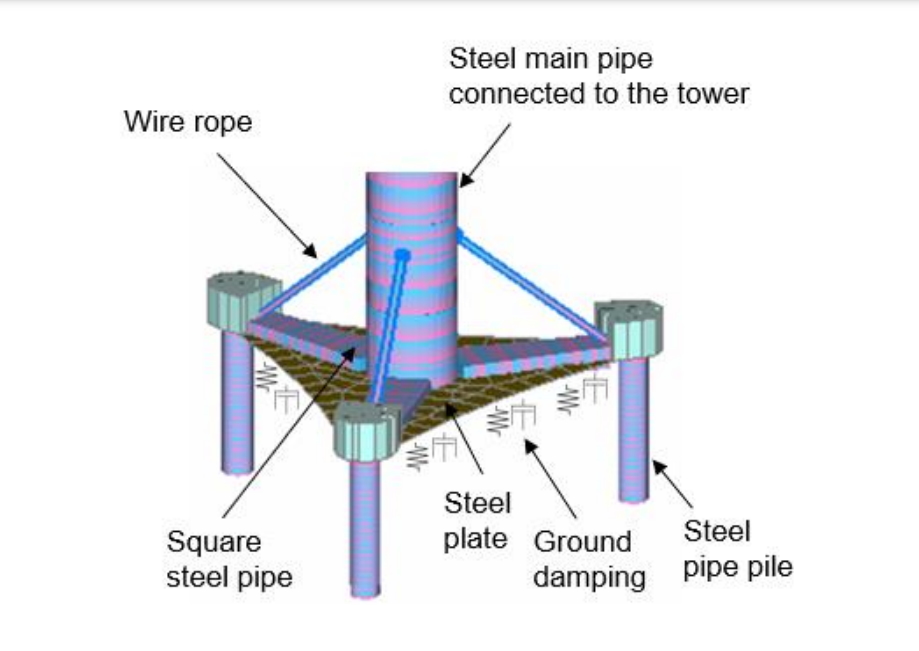Wind Energy – Japan
J-POWER from Japan and the University of Tokyo have jointly devised and patented ‘Flexible Tripile’, a new foundation for bottom-fixed offshore wind turbines specifically designed for Japan’s topography.

Monopile foundations, which have a proven track record in Europe, are frequently used in bottom-fixed offshore wind turbines, which are currently being introduced on a large scale. However, monopile foundations are unsuitable for areas with relatively hard bedrock close to the surface, as is often the case in the waters around Japan.
Drilling efficiently into such bedrock is challenging, necessitating the use of conventional technologies and resulting in higher construction costs.
The newly devised technology incorporates square steel pipes and steel plates in the foundation’s base plate, creating a flexible structure that can deform relatively easily.
This design provides seismic isolation from the ground, improving constructability in areas with shallow bedrock and reducing vibrations caused by earthquakes.
Furthermore, the simplified foundation components allow for lower construction costs than conventional technologies.
The overview, commercial viability, and current status of initiatives related to this technology are as follows:
Overview of the Foundation Structure Using This Technology
The structure consists of three piles and a steel main pipe. The connection between the piles and the main pipe uses the newly devised square steel pipe/steel plate structure and wire ropes.
Commercial Viability of Foundations Using This Technology
The foundation’s central steel main pipe connects to the wind turbine tower. The long, integrated steel pipe section allows the entire wind turbine to sway slowly (long-period motion), reducing the risk of tower oscillations being amplified due to resonance with seismic motion. Additionally, the devised seismic isolation effect minimizes earthquake-induced vibrations. J-POWER’s calculations indicate that the simplification of foundation components, compared to conventional technologies, can be expected to result in significant cost reductions. This technology is also anticipated to be easily adaptable to larger wind turbines in the future.
Initiatives Related to This Technology
J-POWER is conducting joint research with the University of Tokyo. Analysis has confirmed the technology’s effectiveness. Model experiments have also demonstrated that this foundation structure reduces earthquake-induced vibrations more effectively than conventional designs.
The J-POWER Group recognizes the need for further technological development in offshore wind power to achieve the carbon neutrality goals outlined in J-POWER BLUE MISSION 2050, announced in February 2021. J-POWER will continue researching to put Flexible Tripile into practical use in real-world marine environments.
